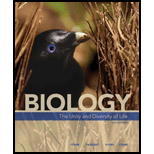
Concept explainers
To determine: The most common type of birth defect in the single-birth group.
Introduction: During the gestation period, the mother can have single birth or multiple births. Single birth is where the mother carries only one fetus during the gestation period in the womb. Multiple births are where more than one fetus is carried during the gestation period, such as twins, triplets, quadruplets, and more. Carrying more than one fetus in the womb results in insufficient supply of nutrient to the developing fetus. These fetuses become still-born or born with abnormalities.
Explanation of Solution
Scientist YT studied the correlation between birth defects and multiple births in City F from 1996 to 2000. The scientist calculated the relative risk of birth defect with factors including type of birth, maternal age, economy, race, and medical care provided during pregnancy. The relative risks were calculated using a scale of 1. Relative risk lesser than 1 indicate that multiple births possess less risk of the occurrence of respective birth defects. Relative risk greater than 1 indicates that multiple births do possess a greater risk of the same. The generated data are given in Fig. 42.16.
According to the study, heart defects were the most common type of birth defect in the single-birth group, which may be due to genetic disorders.
The most common type of birth defect in the single-birth group is heart defects.
Want to see more full solutions like this?
Chapter 42 Solutions
Biology: The Unity and Diversity of Life (MindTap Course List)
- What is behavioral adaptarrow_forward22. Which of the following mutant proteins is expected to have a dominant negative effect when over- expressed in normal cells? a. mutant PI3-kinase that lacks the SH2 domain but retains the kinase function b. mutant Grb2 protein that cannot bind to RTK c. mutant RTK that lacks the extracellular domain d. mutant PDK that has the PH domain but lost the kinase function e. all of the abovearrow_forwardWhat is the label ?arrow_forward
- Can you described the image? Can you explain the question as well their answer and how to get to an answer to an problem like this?arrow_forwardglg 112 mid unit assignment Identifying melting processesarrow_forwardGive only the mode of inheritance consistent with all three pedigrees and only two reasons that support this, nothing more, (it shouldn't take too long)arrow_forward
- Oarrow_forwardDescribe the principle of homeostasis.arrow_forwardExplain how the hormones of the glands listed below travel around the body to target organs and tissues : Pituitary gland Hypothalamus Thyroid Parathyroid Adrenal Pineal Pancreas(islets of langerhans) Gonads (testes and ovaries) Placentaarrow_forward
 Biology: The Dynamic Science (MindTap Course List)BiologyISBN:9781305389892Author:Peter J. Russell, Paul E. Hertz, Beverly McMillanPublisher:Cengage Learning
Biology: The Dynamic Science (MindTap Course List)BiologyISBN:9781305389892Author:Peter J. Russell, Paul E. Hertz, Beverly McMillanPublisher:Cengage Learning Biology: The Unity and Diversity of Life (MindTap...BiologyISBN:9781305073951Author:Cecie Starr, Ralph Taggart, Christine Evers, Lisa StarrPublisher:Cengage Learning
Biology: The Unity and Diversity of Life (MindTap...BiologyISBN:9781305073951Author:Cecie Starr, Ralph Taggart, Christine Evers, Lisa StarrPublisher:Cengage Learning Nutrition Through The Life CycleHealth & NutritionISBN:9781337919333Author:Brown, Judith E.Publisher:Cengage Learning,
Nutrition Through The Life CycleHealth & NutritionISBN:9781337919333Author:Brown, Judith E.Publisher:Cengage Learning,- Case Studies In Health Information ManagementBiologyISBN:9781337676908Author:SCHNERINGPublisher:Cengage
 Biology: The Unity and Diversity of Life (MindTap...BiologyISBN:9781337408332Author:Cecie Starr, Ralph Taggart, Christine Evers, Lisa StarrPublisher:Cengage Learning
Biology: The Unity and Diversity of Life (MindTap...BiologyISBN:9781337408332Author:Cecie Starr, Ralph Taggart, Christine Evers, Lisa StarrPublisher:Cengage Learning





